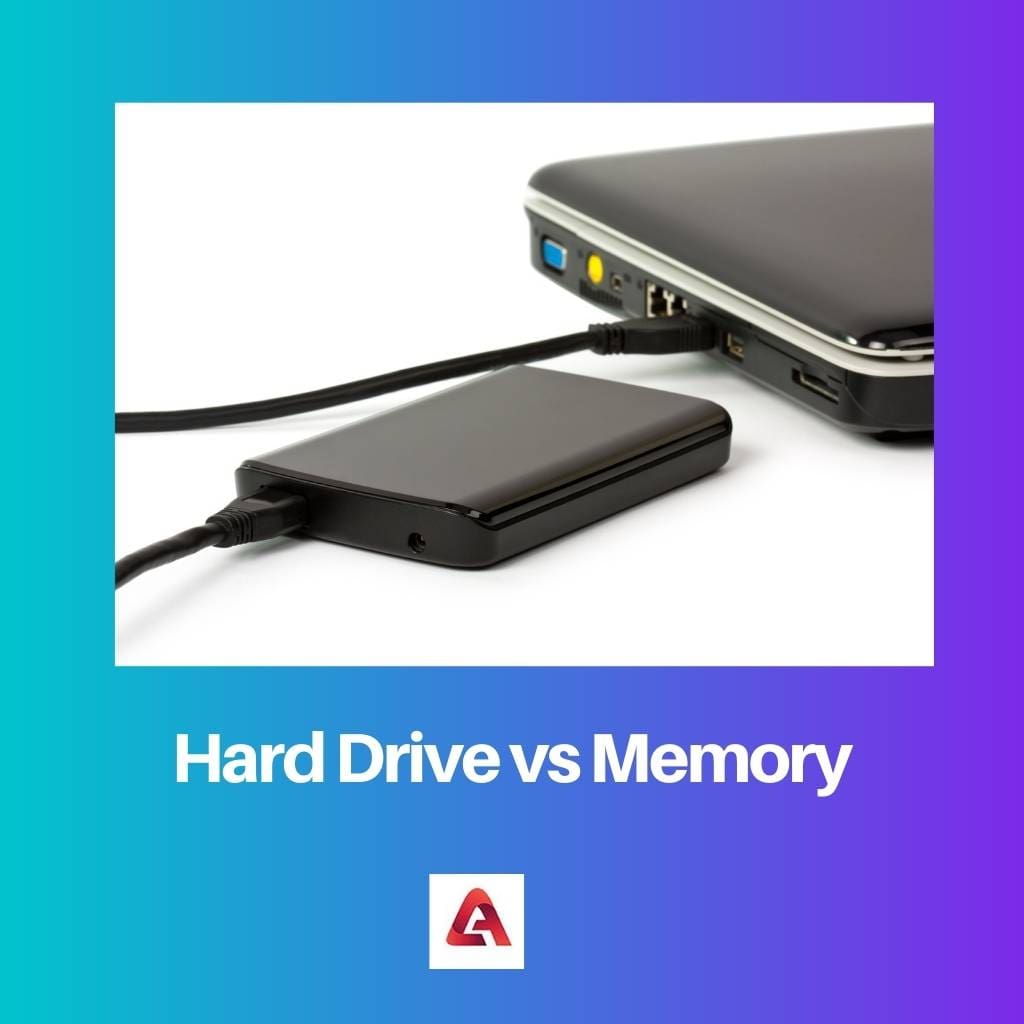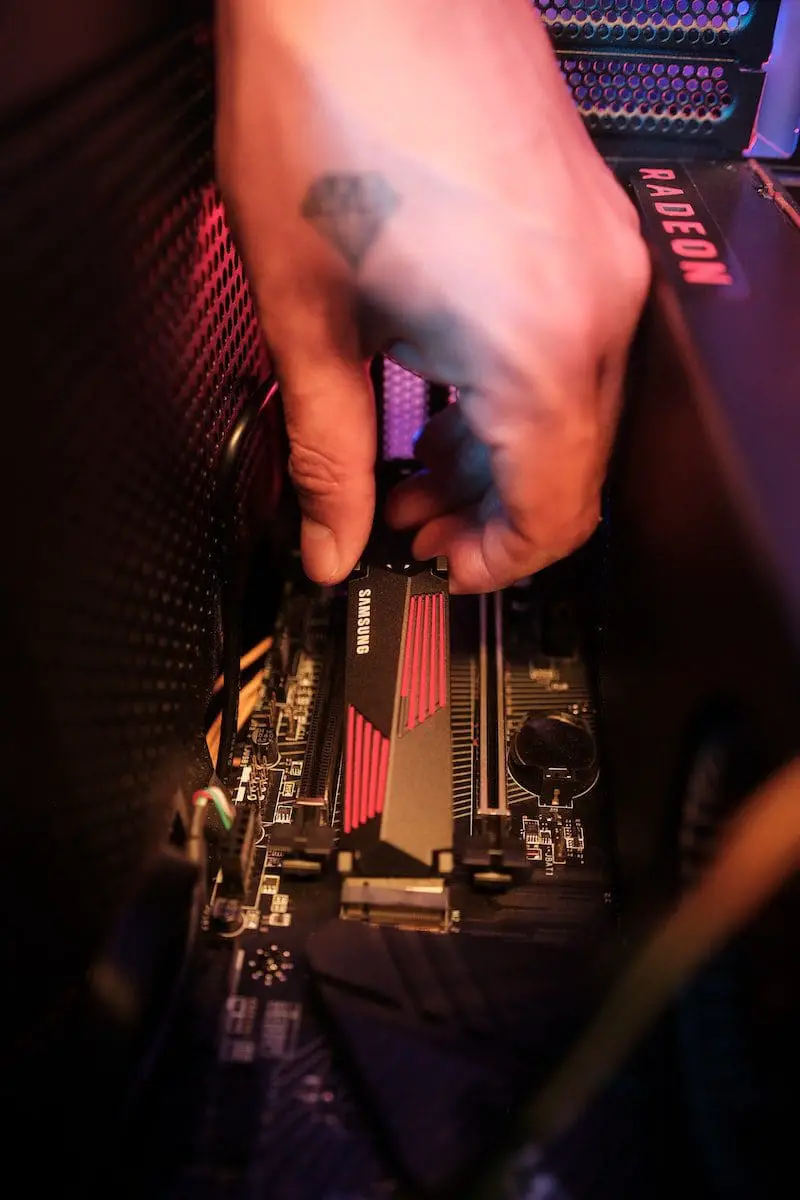Hard Drives and Memory are both used to store data. An error message pops up on the screen, indicating that the memory is full, but mistakenly, it is considered that the hard drive is full. The size of the memory is smaller than the RAM. Hard Drives can store more capacity.
Key Takeaways
- Hard drives provide long-term storage, while memory (RAM) enables short-term data access and processing.
- Data in hard drives remains intact even when power is off, but memory loses data once power is disconnected.
- Hard drives have slower read/write speeds than memory, which operates at higher speeds for quick data retrieval.
Hard Drive vs Memory
A hard drive, or hard disk drive, is a permanent storage device used for storing and retrieving digital files and data. Memory (such as RAM) is used for short-term data storage that a computer or mobile phone, for example, is currently using and is much faster than a hard drive.

Hard Drive is made by using platters. The storage capability is permanent. This is a collection of hard disks. The capacity is huge in Hard drives. The speed of access is low on a hard drive. The hard Drive does not need a power supply continuously. The storage of the hard drive is 1GB to 1TB.
Memory is the random access memory. It has less capacity. The storage memory is temporary. The speed of accessing memory is slow. It is made of chips. It needs a power supply. It needs to be supplied continuously. They have a storage location which is termed a memory location.
Comparison Table
| Parameters of Comparison | Hard Drive | Memory |
|---|---|---|
| Definition | Collection of magnetic disks | Random access memory |
| Capacity | Low | High |
| Storage | Permanent | Temporary |
| Access Speed | Fast | Slow |
| Formation | Platters and disks | Chips |
| Power supply | Not required | Continuous power supply |
What is Hard Drive?
The hard drive is sometimes called a Hard Disk Drive. This is a non-volatile device. It is situated in the internal of the computer. It is kept attached to the disk controller. It is situated on the computer’s motherboard. It is sealed in the air-sealed casing. It lets the computer install any programs.
It is made of platters that are attached using magnetic heads. It uses a random-access manner to access the data. It is a rectangular box which is small. It was first made by IBM in 1956. It was very popular during 1960 as it was dominantly used for secondary storage devices.
Many companies manufactured the hard drive, which became very useful in the computer due to its storage capacity. This has decreased because of the launch of many more devices like mobiles and tablets.
They use solid-state drives, which makes the devices handier. Solid-state drives have a high speed in processing data.
Hard Drive is kept on the actuator, which connects the platter so that it can read and write data and share it with the next platters. These were used in general-purpose computers, and then they went on to be used in personal computers in the 1960s.

What is Memory?
Memory is an electrical part of the computer. It needs a power supply to store the data. The power supply should be continuous. The data storage capability is temporary. It collects all the data and stores it all at low speed. The size of the storage is not much larger and has only space for GBs.
Memory is smaller than a Hard Drive. This acts as a temporary medium to store the data of the computer. Memory is portable. The price is very low for the memory. The retrieve speed is also very low in memory because it does all its work at a low speed.
The memory contains a register in them. These registers are storage locations in the memory. The storage location can also be termed a memory location.
The higher number of bits the memory can store shows its high capacity. It has three types of memory which are known as primary memory, secondary memory, and cache memory.
Memory is used for the immediate purpose of storage. This is a very important component of computers. Memory is used in the computer so that it can function properly. Memory plays a big role in the system. Memory is closely situated with the microprocessor of the computer.

Main Differences Between Hard Drive and Memory
- A hard Drive is a collection of magnetic disks, which are also known as hard disks, but Memory is random access memory.
- The capacity of Memory is smaller than Hard Drive.
- Hard Drive has permanent storage, but Memory has temporary storage.
- The speed of access is fast in-memory than on the hard drive.
- Hard Drive is formed by platters and disks, but Memory is formed by chips.
- Hard Drive does not need a power supply, but Memory needs a power supply.

- https://ieeexplore.ieee.org/abstract/document/4770567/
- https://www.cambridge.org/core/journals/behavioral-and-brain-sciences/article/what-memory-is-for/46E0F728DAA67D54AA44D2C4634D9556

Great article explaining the differences between hard drives and memory. The detailed comparison table was most helpful.